Food Japan nuances is a follow-up of my main post on Food Culture Japan. This was done last month and a quick follow-up post. It more about nuances of the food culture that goes unnoticed.
It helps explain the history and origins of the some of the main dishes and why certain things are done. Elements that make food culture in Japan unique and unusual.
Traditional phases of Japanese food evolution
The traditional phase of Japanese food culture is when Japan had an isolationist policy that lasted until 1868 during the Edo period. Foreign interactions were banned and limited trade allowed in the far South of the country, at the port of Nagasaki. And it was limited to the Portuguese, Dutch and Chinese traders.

Japanese form of Buddhism at that times did not allow the consumption of 4 legged animals and therefore chicken and seafood prevailed. And seafood consumption both in range and frequency was large in proportion to other sea faring cultures . Seafood remains prominent till today and Sushi and Sashimi are the signature cuisines of this maritime genre. .
One interesting foreign influence that did manage to creep in during the period of isolation was frying. Tempura which is deep fried vegetables is not native to Japanese. And weirdly it does not exist anywhere else either except for the Iberian peninsular.
The Portuguese introduced the concept of frying in oil and the Japanese made it their own. Even the word “tempura” is derived from Latin “ ad tempora cuaresme” which means “in time of Lent” when meat is forbidden for Catholics. So deep fried vegetables had to do.

And today Tempura is identified solely Japanese thru and thru and popular in Japan and the World around. As they took it to another level.
Post isolationist food evolution
The British operating out of East India introduced curry and now curry noodles and curry rice are common and popular Japanese dishes. Again the Japanese version does not come close to curried dishes of India or even South East Asia. Unlike the look of curries of the Indian sub-continent, South East Asia or the Caribbean, the Japanese versions has a different colour and texture is of thick sauce.
The Chinese introduced the thinner Ramen noodles and dumplings known as Gyoza. It also includes Shabu Shaba and hotpot.
They are noticeable as they are served as single dishes. It moves away from their traditional form of a main and 2 sides dishes with either noodles or rice. The presentation and colourful garnishes which Japan cuisine is known for however were incorporated into these foreign influenced dishes.
Traditional vs post isolationist differences
Traditional Japanese cuisine is noted for its focus on health , nutritional balance and use of seasonal food sources. There is no or limited pre-processing of food or the use of oil , spices and sauces. It is close to nature both in terms of form and taste.
The concept of freshness is yet another element and is pervasive in Japanese food culture. And it starts with making noodles from flour at the premises on the same day to vegetables, seafood and meat preparation. Sashimi is probably the most pronounced form of freshness.

Nutritional balance’s most prominent manifestation is the ubiquitous food tray. It contains the main dish, the soup and one or two sides dishes and the pickles. So there is always meat, vegetables and either rice or noodles.
Though this is also common in the Far East, the Japanese still use this extensively. And in many cases, it is also an art form as colours of trays, bowls and layout are carefully picked.

Post isolationism, saw the creation of more processed food and the use of marinates, flour batter, spices and sauces found in dishes such as Okonomiyaki, Tonkatsu, Yakisoba, Karaage etc.
These also include commercially available and popular sauces such as ketchup, Worcestershire sauce as well as mayonnaise. The flavours are more derived from the marinates and the sauces and these can be in copious amount.

It should also be noted that in traditional Japan and due to Buddhism, pure vegan cuisines have alway been present and well established. You just have to sought it out. And you find that it is indeed a treat.
Little items
The use of banks of kitchen timers, food thermometers, weighing scales and ice cubes are used extensively in the preparation of food. You will hear the timer alarms going off, you can spot the thermometers and hear the frequent collection of ice cubes from the ice cube machines. .
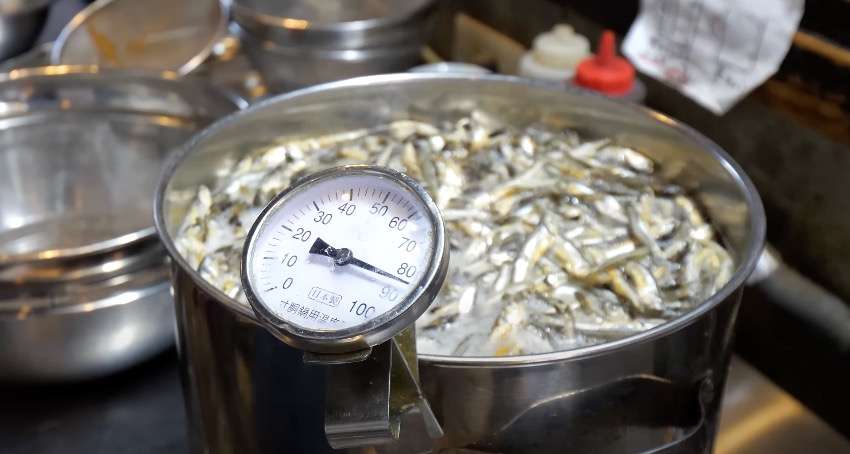
Timers are essential. Multi-tasking with multiple dishes being prepared at the same time, and the Japanese style of arresting the cooking process of certain dishes calls for it.

All these indicates the meticulous approach to ensure that ingredient portions are in correct quantity and no food is overcooked.
Noodles drenched in hot water are placed in a bowl or sink with water and ice cubes to stop the cooking process. No other food culture uses them as extensively as the Japanese.
Taller cooking pots
Cooking pots are small or big. Japanese preference for the taller, slender version . I initially assumed that it was one of those things carried on over generations and it was the norm. It was like a country that inherited left or right hand drive from its colonial past. It did look odd as most countries pots in commercial kitchen were lower whether in Asia, Europe or North America.

Then I realised why. Japan and its highly urbanised cities are pressed for space. Its population density is high and commercial space constrained. If you look into a cafe kitchen it is packed with equipments, and burners are side by side. Hence the pots have to go upwards and not sideways. Another little nuance. And no different to high rise buildings in a densely populated city.
Garnishes
These come in the form of chopped herbs, sprigs, cut fruit slices such as lemons, crushed nuts, seaweed strips, egg roes, breadcrumbs, edible flowers and leaves, olive oil and egg yoke.
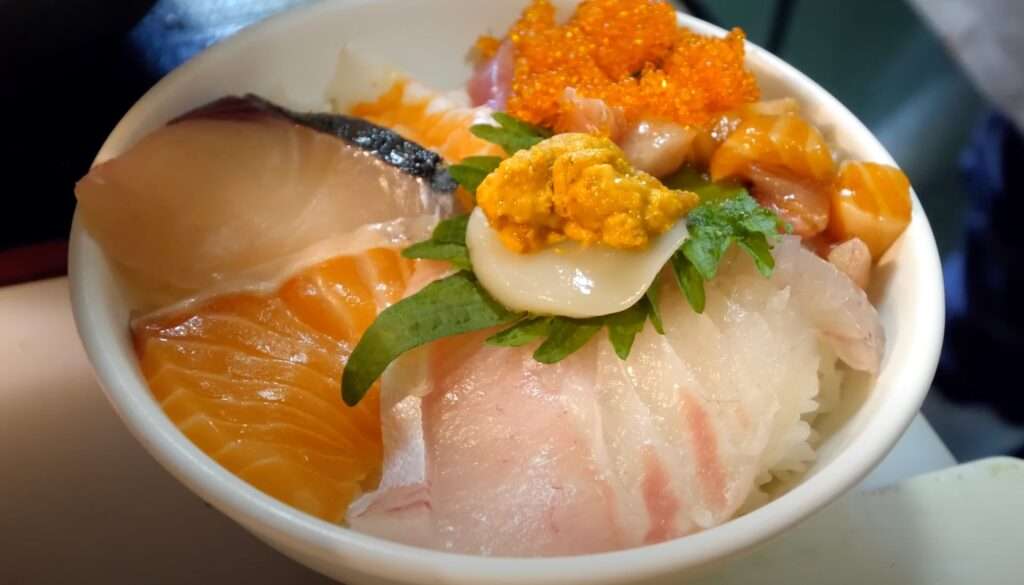
They serve a decorative purpose in the main but they must also be edible and enhance the primary dish in taste.
Cuisines around the World use garnishes as well to finish plating a dish but the Japanese make it an art form even in small cafes and street stalls. And many dishes have more than one. Again presentation comes to the fore.
The use of the raw egg yoke without the egg white is common and a good example. The reddish yellow egg yoke catches the eye immediately when served sitting on the top of the dish. In some cases I did wonder if it actually accentuated or complimented some of the dishes that had it.
Here is an interesting nuance when compared to western cuisines. In western cuisines we immediately know that garnish is the decorative piece and we push it aside despite it being edible. Or have it separately. In Japanese cuisine they seem to be an integral part of the dish to be consumed. You are unlikely to push it aside. It goes to show that this too is carefully picked.
Vending machines for food orders
Though European in origin, Japan has the highest ratio of vending machines to people of any country. It is the only part of the Japanese food culture that is not tradition bound.
Food orders are placed via these machines and they actually offer custom options for dishes such as firmness of noodles to spiciness. So it not the usual automation.
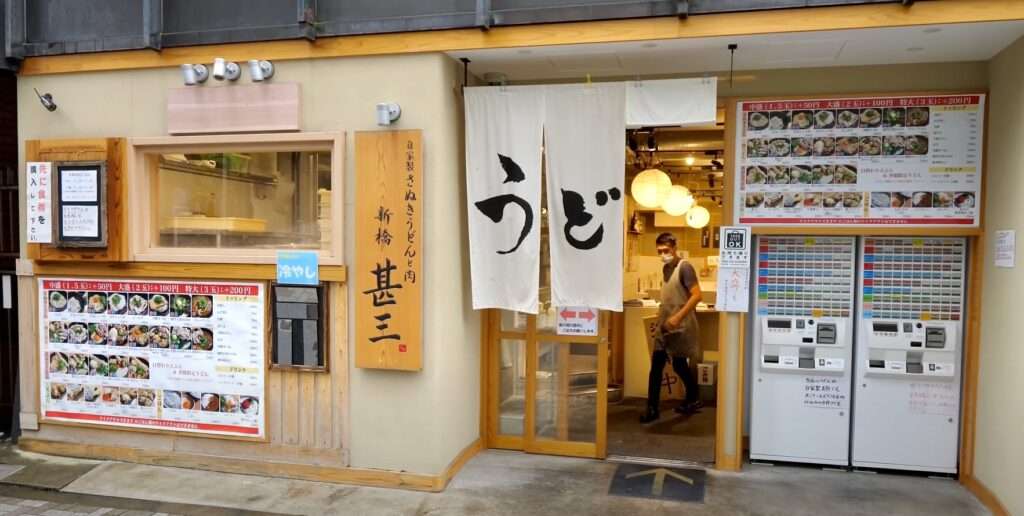
It is also the fastest part of their food consumption cycle. Everything else requires meticulous preparation. Personally I felt it broke the chain of rich tradition of Japanese food culture. But you can’t fault its use in terms of labour cost savings. Automation in timing and accurate orders are benefits as well.
Maybe the design of such machines can be changed to be less machine like. Perhaps a bamboo facade.
Dashi – Fish and Kelp stock
The use of fish stock is extensive in the Far East and South East Asia. It is considered indispensable for many dishes in the region. It also used in countries with rich maritime history such as Spain and Portugal.
To the Japanese it is the foundation of food Japan. It is essential and the usual ingredients are skipjack or Bonito flakes, preserved anchovies but with one main addition, kelp.
The preparation of the this stock for cooking food and for broth begins when the kitchen comes alive each day. It is the start for the day’s cooking. Soya sauce is also added to the stock for variations in taste for certain recipes.

The Japanese call the fish and kelp based stock “dashi” and it brings out the last of the 5 recognised basic taste sensations “Umami”. After sweet, sour, bitter and salty.
The “Umami” taste sensation was officially recognised in 2002. The closest description of umami is savouriness. There is also no known substitute for kelp in the preparation of dashi.
Dashi is the basis of their famous Miso soup and other soups as well as noodle based broth. It is even mixed into the flour base of dishes such as Okonomiyaki and Takoyaki.
When you take in a spoonful of Miso soup, you will know what Umami taste like and then realise that you have felt it in nearly every Japanese dish.
My guess is that the dashi goes towards a chef’s and cafe’s identity.
Omelettes
I have already covered egg yokes as garnishes but omelettes have a life of their own in Japan food culture. It is not part of the old tradition.
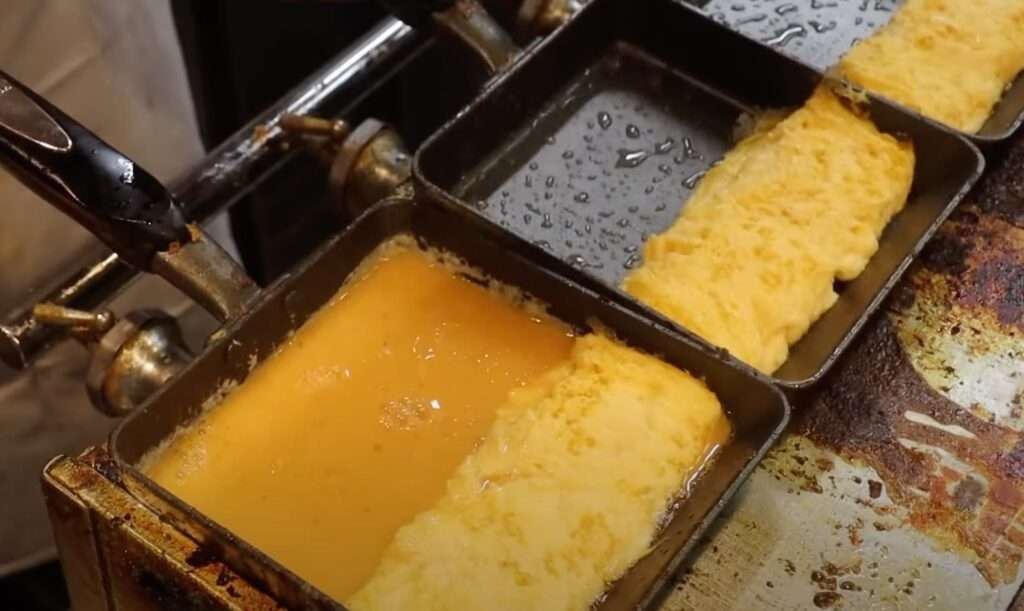
It appears to have started as garnish in recent decades. One such omelettes is multi-layered and thick called tamagoyaki. There are special rectangular frying pans for it.
It is very unlike omelettes dishes often seen in Chinese and Western cuisines both of which are similar.
There is also the sweetened version when dashi and sugar are added. And amazingly a non Japanese condiment, the ketchup accompanies it in many preparations. They are served as side dish and sometimes placed on top of the main dish. This bring me into the next nuance, food portions.
Japanese food portions
I wonder if anyone else seems to notice this about Food Japan.
Their portions are large by Asian standards and some times by Western standards. The bite sized portions such as sushi, sashimi and even tempura can mislead.
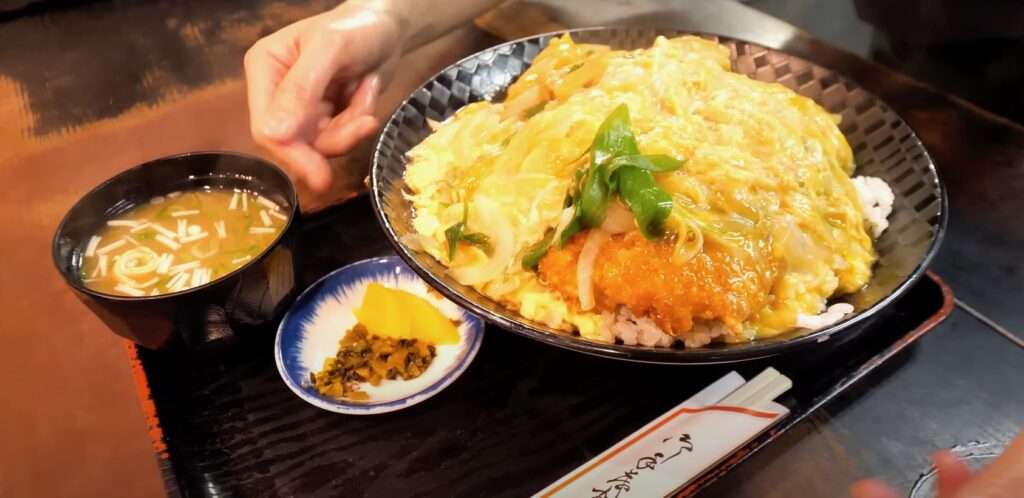
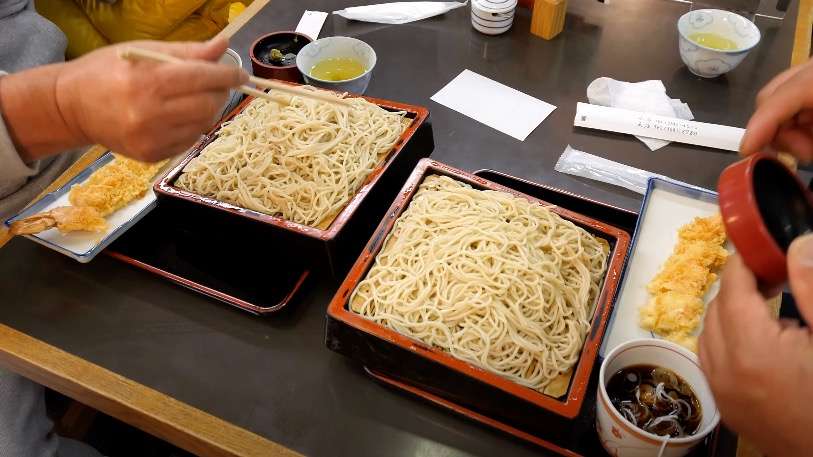
The dishes in the tray are telling and they add up.
The noodles and rice portions are the largest I have seen where these two are staple in countries in Asia. Only the South Indian and Filipinos rice portions are similar in size.
But they do not lead to obesity or health issues.
Japanese are actually in the lowest quarter for World obesity and one of two highest for longevity. Like the French whose cuisine is World class both their people are in the lean category. But the French portions tend to be smaller.
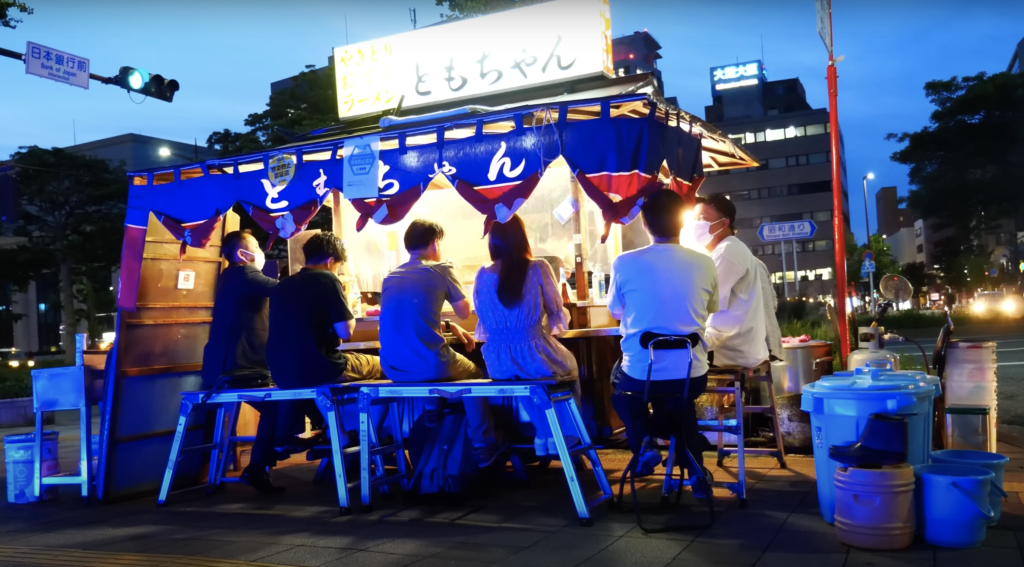
Food Japan is a true journey of discovery. And an richly appetising one at that.
My sense is that there is a necessary demand for Japanese food guide for visitors as nuances are many and not easily noticeable. Reading up and going solo will not even touch the surface.
And we have not even covered “Yatai”, the street food vendors. No trays but the colourful art form is still there.
